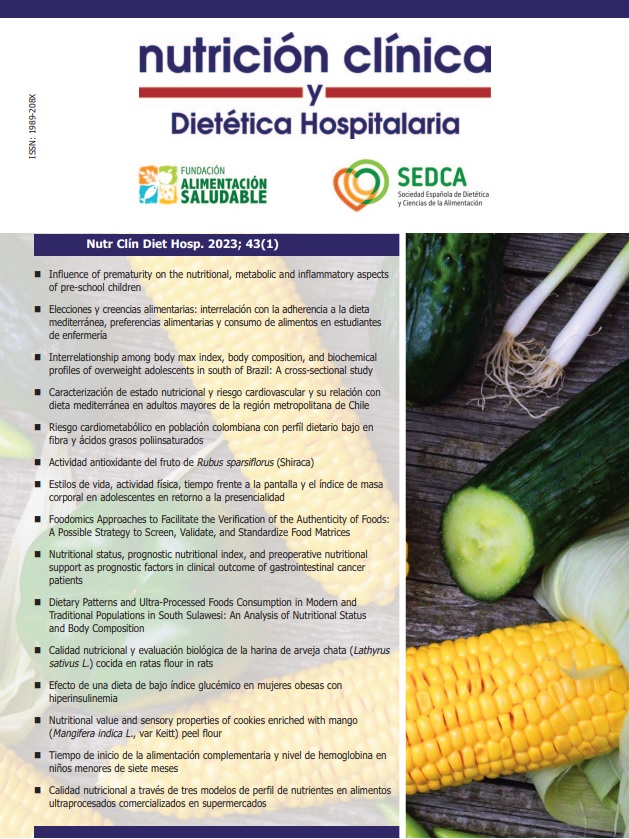Nutritional quality through three models of nutrient profiles in ultra-processed foods sold in supermarkets
DOI:
https://doi.org/10.12873/431vegaKeywords:
Nutrient profile; Ultra-processed foods; Nutritional octagon.Abstract
Introduction: Latin American countries have implemented different models of advertising warnings in ultra-processed foods, to identify critical nutrients, as part of their policies to reduce their consumption.
Objective: To compare the nutritional quality through the PAHO nutrient profile model, Uruguayan and the Peruvian warning manual in ultra-processed foods.
Materials and Methods: Research with a quantitative approach, non-experimental, descriptive-comparative design, the final analytical sample was 177 ultra-processed foods, data collection was carried out through a file with a photographic record from November 02 to 30, 2021, in food ultra-processed products sold in supermarkets. Nutritional quality was evaluated through the PAHO, Uruguay and Peru model. To compare the models, the non-parametric Kendall's W test was used, the level of statistical significance was p<0,05.
Results: 44,92% of ultra-processed foods evaluated do not comply with the OPS model, being the strictest; 33,19% and 29,94% fail to comply with the Peruvian warning manual and the Uruguayan model, respectively. In the critical nutrient sugar, 67,23% do not comply according to the OPS model, likewise, 53,11% and 41,27% do not comply with the Uruguayan and Peruvian models, respectively; when comparing the nutrient profile in the three models, a p value <0,05 was obtained.
Conclusion: There are significant differences when comparing the nutritional quality of ultra-processed foods through three nutrient profile models, the OPS model being the strictest, the most permissive being the Peruvian warning manual.
Downloads
Published
License
Copyright (c) 2023 Nutrición Clínica y Dietética Hospitalaria

This work is licensed under a Creative Commons Attribution-NonCommercial-NoDerivatives 4.0 International License.
Los lectores pueden utilizar los textos publicados de acuerdo con la definición BOAI (Budapest Open Access Initiative)



